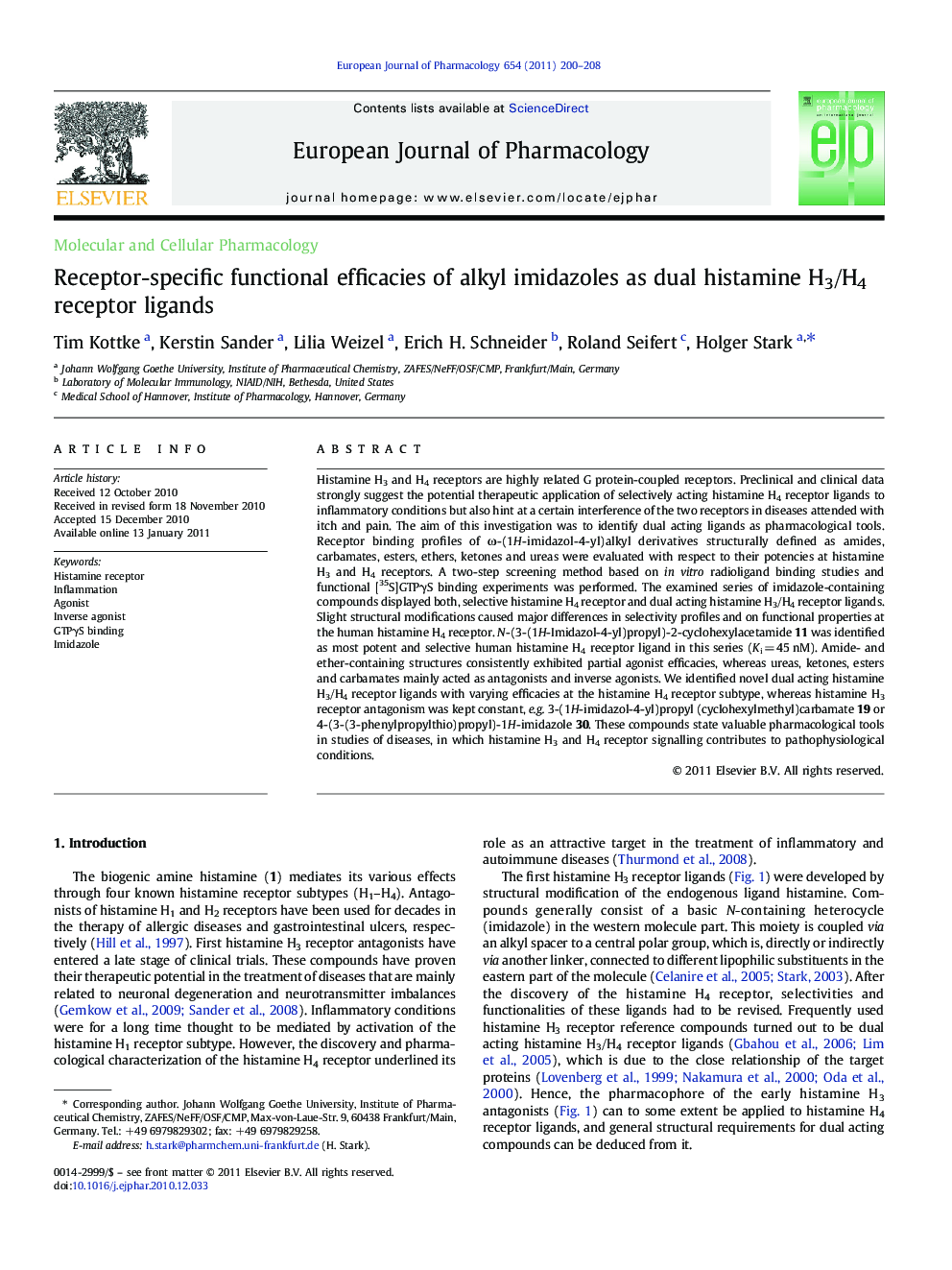| کد مقاله | کد نشریه | سال انتشار | مقاله انگلیسی | نسخه تمام متن |
|---|---|---|---|---|
| 2532967 | 1559034 | 2011 | 9 صفحه PDF | دانلود رایگان |

Histamine H3 and H4 receptors are highly related G protein-coupled receptors. Preclinical and clinical data strongly suggest the potential therapeutic application of selectively acting histamine H4 receptor ligands to inflammatory conditions but also hint at a certain interference of the two receptors in diseases attended with itch and pain. The aim of this investigation was to identify dual acting ligands as pharmacological tools. Receptor binding profiles of ω-(1H-imidazol-4-yl)alkyl derivatives structurally defined as amides, carbamates, esters, ethers, ketones and ureas were evaluated with respect to their potencies at histamine H3 and H4 receptors. A two-step screening method based on in vitro radioligand binding studies and functional [35S]GTPγS binding experiments was performed. The examined series of imidazole-containing compounds displayed both, selective histamine H4 receptor and dual acting histamine H3/H4 receptor ligands. Slight structural modifications caused major differences in selectivity profiles and on functional properties at the human histamine H4 receptor. N-(3-(1H-Imidazol-4-yl)propyl)-2-cyclohexylacetamide 11 was identified as most potent and selective human histamine H4 receptor ligand in this series (Ki = 45 nM). Amide- and ether-containing structures consistently exhibited partial agonist efficacies, whereas ureas, ketones, esters and carbamates mainly acted as antagonists and inverse agonists. We identified novel dual acting histamine H3/H4 receptor ligands with varying efficacies at the histamine H4 receptor subtype, whereas histamine H3 receptor antagonism was kept constant, e.g. 3-(1H-imidazol-4-yl)propyl (cyclohexylmethyl)carbamate 19 or 4-(3-(3-phenylpropylthio)propyl)-1H-imidazole 30. These compounds state valuable pharmacological tools in studies of diseases, in which histamine H3 and H4 receptor signalling contributes to pathophysiological conditions.
Graphical AbstractFigure optionsDownload high-quality image (69 K)Download as PowerPoint slide
Journal: European Journal of Pharmacology - Volume 654, Issue 3, 11 March 2011, Pages 200–208